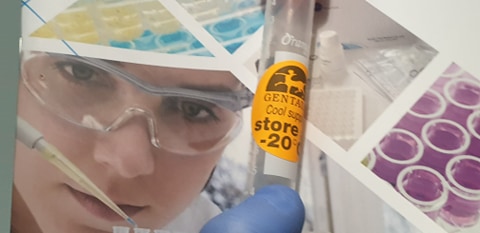Sometimes, details that are not given too much attention can have a considerable impact on the precision and reproducibility of the results of a certain technique.
In this post we review the most critical aspects in each of the steps that make up this technique to know how to improve the accuracy of Western Blot.
1.- SAMPLE PREPARATION
The first step to achieve a clean and precise Western Blot lies in the correct preparation of the sample under analysis.
Choosing the protein extraction method is critical in this step. Likewise, it is important to pay special attention to aspects such as:
- Buffers
- Homogenization procedures
- Fractionation procedures
- Protease inhibitors,
- Temperature
- Sample storage

2.- GEL ELECTROPHORESIS
SDS-PAGE is the most widely used method to separate proteins based on their molecular weight. Larger proteins migrate more slowly through the gel, while smaller proteins do so faster, resulting in a separation based on their size.
To make this separation as clear as possible, both the gel concentration and the test conditions must be optimized for each specific case.
3.- PROTEIN TRANSFER
The transfer to a membrane of the previously separated proteins by electrophoresis, allows better management and greater accessibility for the antibodies and other detection reagents.
At this point, it is important to properly select the type of transfer to be chosen:
- Wet transfer
- Semi-dry transfer
- Dry transfer
All of them are based on the electrophoretic mobility of proteins to migrate from the gel to the membrane, and the main differences between them reside in the type of equipment required in each case, as well as in the speed and efficiency of the transfer.
4.- BLOCKING OF THE MEMBRANE
The blocking step prevents non-specific binding of the antibody to the membrane by saturating it with non-reactive proteins, so the correct selection and optimization of blocking buffers is another critical point to know how to improve Western Blot precision. .
For a suitable choice of blocking buffer, the detection system to be used must be taken into account, as well as the antigen to be detected.
5.- DETECTION
In order to detect the protein of interest, it is vitally important to use the appropriate concentration of antibodies for each assay. A non-optimal concentration could result in problems like:
- Poor signal
- Non-specific bands
- Background noise
The determination of the optimal concentration of antibodies in each case depends on several factors, including:
- Antigen concentration
- The specificity of the antibody
- Antibody affinity
- Experimental conditions (composition of buffers, washes, etc.)
To go deeper in this regard, we leave you this entry on How to choose antibodies for western blot and also this one with tips for optimizing the concentration of antigen and antibody for western blot .

